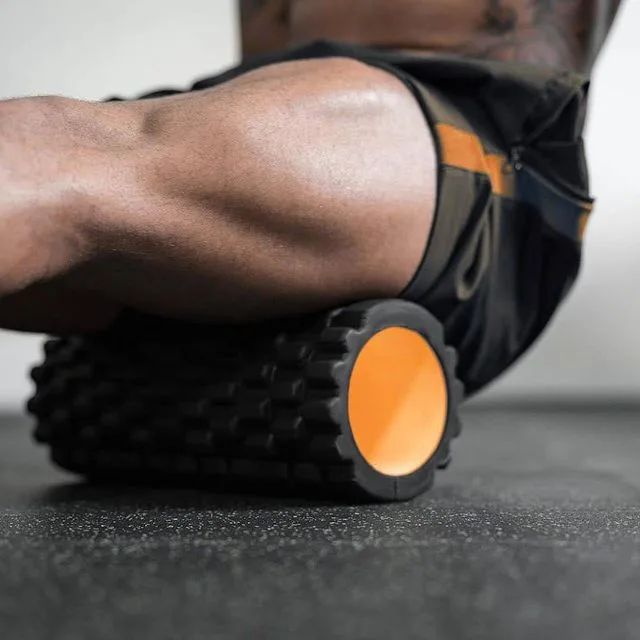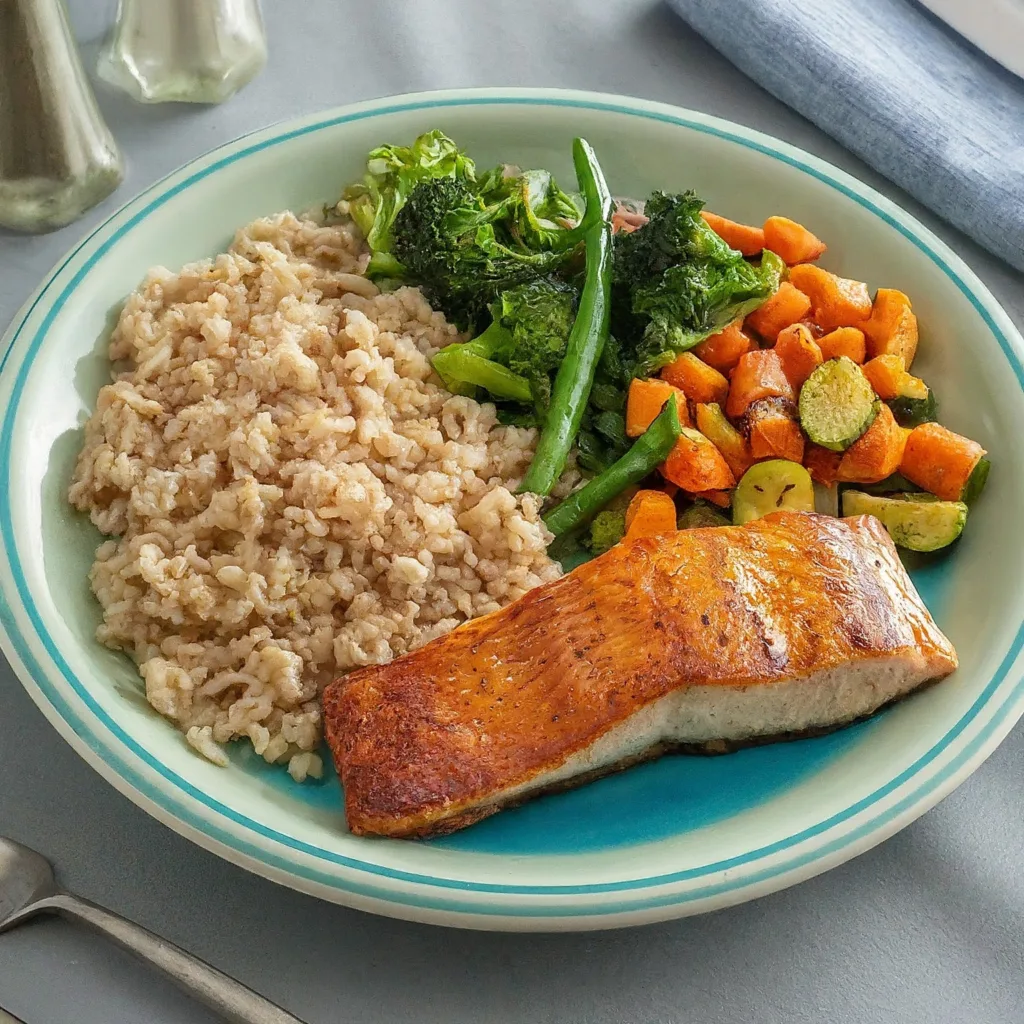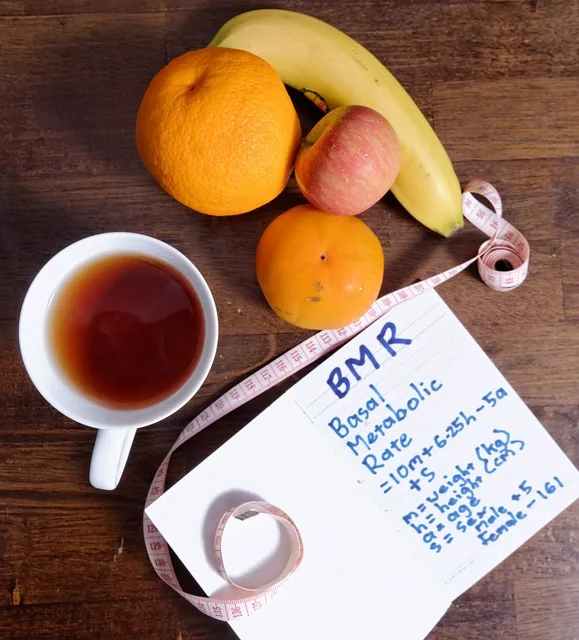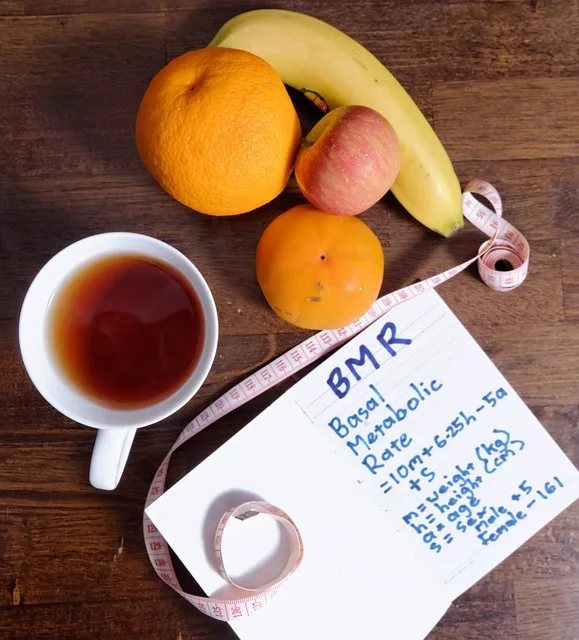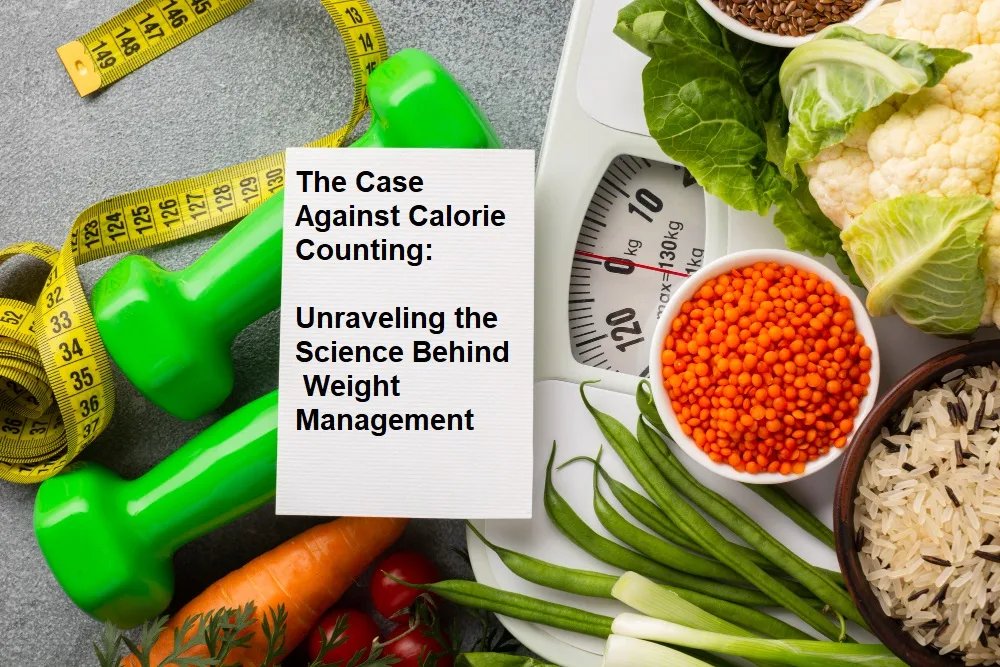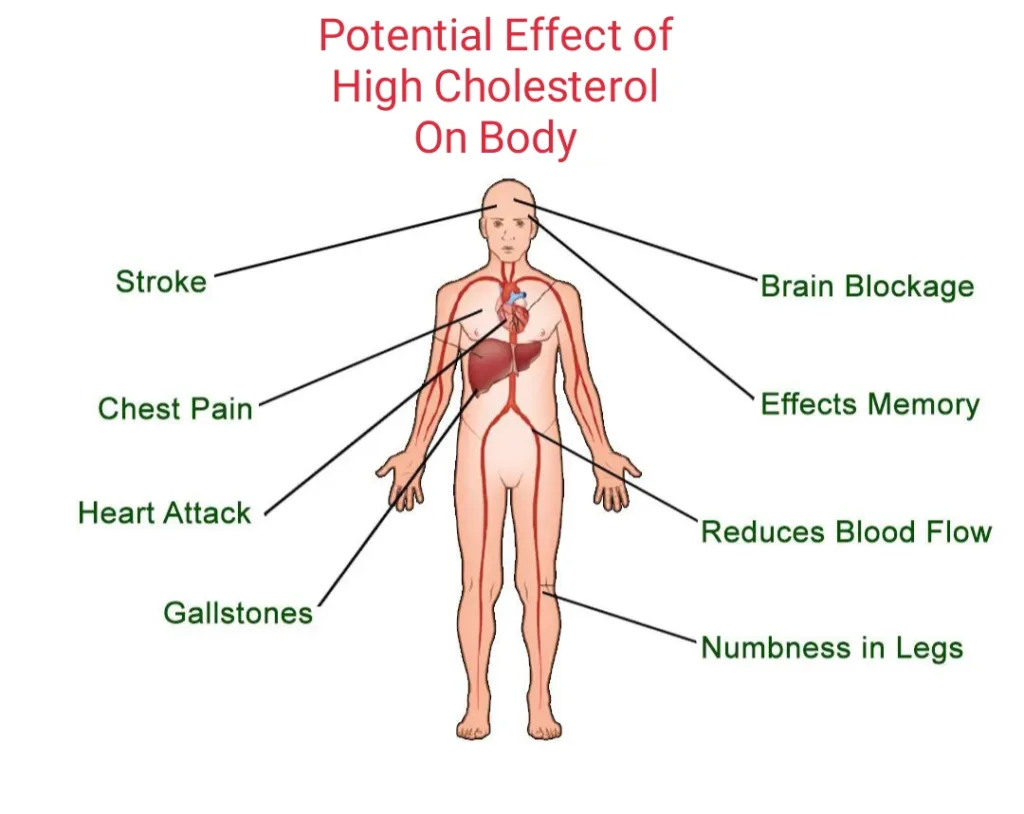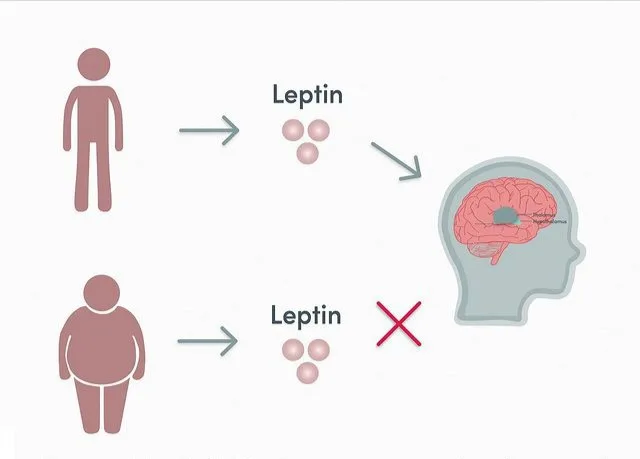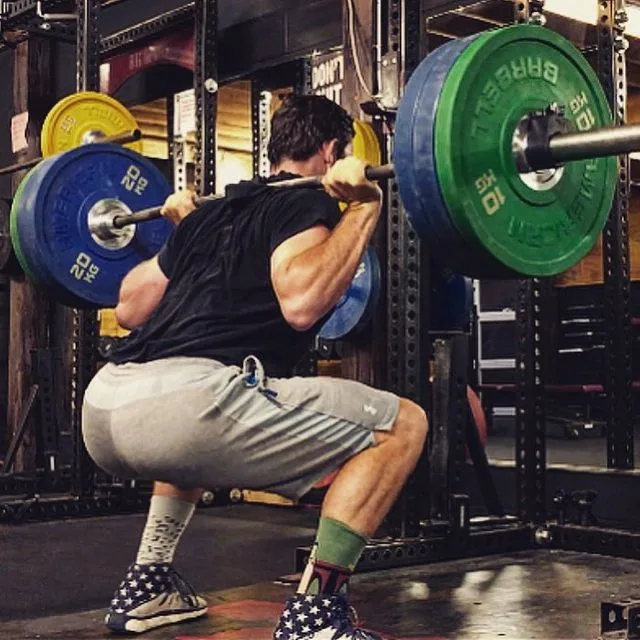Adequate muscle recovery is important for the health and performance of muscles.
Proper recovery can help prevent injury, improve athletic performance, and promote overall health.
There are several strategies that can help maximize muscle recovery, including rest days, proper nutrition, hydration, and recovery techniques such as stretching, foam rolling, and contrast water therapy. It is important to listen to your body and take rest days as needed to allow the muscles to recover fully.
The frequency of rest days required can vary based on factors such as workout intensity, fitness level, and overall health. By following a balanced exercise plan and incorporating proper recovery strategies, you can ensure that your muscles are able to perform at their best.
What is adequate recovery?
Adequate recovery refers to the process of allowing the body to rest and repair itself after physical activity or exercise. It involves a combination of proper nutrition, hydration, sleep, and active recovery methods to reduce muscle soreness and enhance overall performance. This helps to prevent injury and improve athletic performance.
What is muscle recovery?
Muscle recovery refers to the process by which the muscles repair and rebuild themselves after physical activity or exercise. It is an essential part of the workout routine as it helps to prevent injury, reduce muscle soreness, and improve athletic performance. Effective muscle recovery strategies include proper nutrition, hydration, rest, and active recovery techniques such as stretching, foam rolling, and massage.
What is rest day?
Rest day refers to the process of allowing the body to rest and recover on a designated rest day from physical activity or exercise. It is an important part of an overall workout routine as it helps to prevent injury, reduce muscle soreness, and improve athletic performance. Effective rest day recovery strategies include adequate sleep, proper nutrition, hydration, and active recovery techniques such as stretching, foam rolling, and massage. The goal of rest day recovery is to rejuvenate the body and mind, promoting overall well-being.
What is workout recovery?
Workout recovery refers to the process of allowing the body to rest and repair itself after exercise. This includes physical, mental, and nutritional recovery methods that help the muscles and other systems recover from the stress of physical activity. The purpose of workout recovery is to improve athletic performance, reduce the risk of injury, and promote overall health and well-being. Some common methods of workout recovery include rest days, hydration, nutrition, stretching, foam rolling, and recovery techniques such as contrast water therapy and cryotherapy.
Adequate recovery vs. Muscle recovery
Adequate recovery and muscle recovery are similar concepts that refer to the process of allowing the body, particularly the muscles, to rest and repair after physical activity or exercise.
Adequate recovery is a more comprehensive approach that encompasses various strategies to promote overall well-being, including proper nutrition, hydration, sleep, and active recovery methods, while muscle recovery specifically focuses on repairing and rebuilding the muscles.
Both are important to prevent injury, reduce muscle soreness, and improve athletic performance. 1
Benefits of recovery
These benefits highlight the importance of adequate muscle recovery in improving overall athletic performance and promoting overall well-being.
Adequate muscle recovery has several scientifically proven benefits, including:
- Reduced muscle soreness: Recovery helps to reduce muscle soreness, also known as Delayed Onset Muscle Soreness (DOMS), by allowing the muscles time to repair and rebuild themselves. 2 3 4
- Improved athletic performance: By allowing the muscles to recover, adequate recovery helps to improve athletic performance, increase strength and endurance, and reduce the risk of injury. 4
- Reduced risk of injury: Recovery helps to prevent overuse injuries by reducing muscle fatigue and promoting flexibility and mobility.
- Enhanced muscle growth: The recovery is essential for muscle growth as it allows the muscles time to repair and rebuild, leading to increased muscle mass and strength.
- Improved mental well-being: The recovery helps to reduce stress and improve mental well-being by allowing the body and mind to rest and recover.
- Boosted immune system: Recovery helps to boost the immune system by reducing stress and promoting overall well-being.
Proven tips to boost muscle recovery and performance
By incorporating these tips, you can maximize muscle recovery, reduce muscle soreness, and improve athletic performance. It’s important to remember that everyone’s body is different, and recovery strategies that work for one person may not work for another. It’s important to listen to your body and adjust your recovery strategies accordingly.
To maximize muscle recovery, several proven tips can be divided into several categories:
Sleep and Rest:
- Get 7-9 hours of quality sleep each night to allow the body to fully recover and repair. 5
- Avoid physical activity for a few hours before bedtime to promote relaxation and sleep quality.
- Take rest days or engage in low-intensity activities to allow the muscles to recover.
Nutrition:
- Consume a balanced diet with sufficient protein, carbohydrates, and healthy fats to support muscle recovery and growth. 6
- Eat a meal or snack containing protein and carbohydrates within 30 minutes of finishing your workout to support muscle recovery.
- Post-workout: Greek yogurt, cottage cheese, chicken breast, salmon, turkey, and eggs are good sources of protein that can aid in muscle recovery post-workout. Simple carbohydrates such as fruits or sports drinks can quickly replenish glycogen stores depleted during physical activity. 7 8
- Pre-workout: A light snack containing protein, such as a hard-boiled egg or a protein bar, can provide energy and support muscle growth prior to physical activity or pre-workout. Complex carbohydrates such as sweet potatoes, brown rice, or whole grain bread can provide energy for physical activity. 9 10
- Tart cherry juice is marketed as a natural remedy for promoting muscle recovery after exercise. It is thought to have anti-inflammatory and antioxidant properties that may help reduce muscle pain and inflammation, promote muscle recovery, and improve sleep quality.
- Some studies have suggested that tart cherry juice may be effective in reducing muscle soreness and improving recovery after intense exercise, although more research is needed to fully understand its effects. 11
- Additionally, tart cherry juice contains antioxidants and other nutrients that may have other health benefits.
Supplements:
- Omega-3 fatty acids, glutamine, and antioxidants can also be beneficial for muscle recovery. 12
- Creatine: A naturally occurring compound found in the body, creatine can support energy production and increase muscle strength. 12 13 14
- Protein Powder: A convenient and easily digestible source of protein, protein powder can support muscle growth and recovery.
Hydrating Drinks:
- Drink plenty of water to stay hydrated and promote muscle recovery.
- Consider electrolyte-rich drinks such as coconut water or sports drinks to replace lost electrolytes during physical activity.
- Stay hydrated by drinking plenty of water before, during, and after physical activity. 15
Active Recovery Techniques:
- Incorporate active recovery techniques such as stretching, foam rolling, or massage to reduce muscle soreness and promote flexibility and mobility.
- Engage in low-impact activities such as yoga or swimming to promote muscle recovery and reduce stress on the joints.
- Consider taking an ice bath or using an ice pack to reduce inflammation and promote muscle recovery after intense physical activity.
Workout Routine:
- Alternating high-intensity workouts with low-intensity or rest days can help to prevent overuse injuries and promote muscle recovery.
- Avoid overtraining by listening to your body and avoiding pushing yourself too hard.
- Focus on proper form and technique to reduce the risk of injury and promote muscle recovery.
Lifestyle Habits:
- Maintain a healthy and balanced diet to support recovery and overall health.
- Avoid smoking and limit alcohol consumption as these habits can negatively impact recovery and overall health.
- Manage stress through activities such as meditation, yoga, or exercise.
Massage:
- Massage is a therapeutic technique in which the muscles and soft tissues are manipulated using various methods, such as pressure, kneading, and friction, to relieve pain and promote relaxation.
- Massage is often used for muscle recovery after exercise as it can help reduce muscle soreness, improve circulation, and promote overall relaxation. 4
- Additionally, massage can help increase range of motion, improve flexibility, and reduce the risk of injury by promoting proper alignment and muscle balance.
- Some common types of massage used for muscle recovery include Swedish massage, sports massage, deep tissue massage, and trigger point massage.
Contrast water therapy:
- Involves alternating between hot and cold water to improve circulation and support muscle recovery. 16
Cryotherapy:
- Involves exposing the body to extremely cold temperatures to reduce inflammation and promote muscle recovery. 17
Things to Avoid:
- Alcohol is a central nervous system depressant that can have negative effects on muscle recovery after exercise.
- Consuming alcohol after exercise can impair the body’s ability to repair and regenerate muscle tissue, leading to longer recovery times and decreased athletic performance.
- Additionally, alcohol can interfere with the absorption of certain nutrients that are important for muscle recovery, such as protein and electrolytes. 18
- Avoid overtraining and pushing yourself too hard, as this can lead to fatigue, injury, and decreased performance.
- Avoid staying in one position for extended periods of time, such as sitting at a desk, as this can lead to muscle tightness and stiffness.
- Tobacco, including cigarettes and smokeless tobacco, is harmful to overall health and can have negative effects on muscle recovery after exercise.
- Smoking is associated with decreased blood flow, which can slow down the healing process and impair muscle recovery.
- Additionally, the chemicals in tobacco smoke have been shown to have a harmful effect on the muscles and tissues, causing inflammation and oxidative stress, which can slow down the healing process and increase the risk of injury. 19
- Furthermore, smoking can also lead to decreased oxygen levels in the blood, which can affect the body’s ability to repair and regenerate muscle tissue.
Consider:
- Working with a physical therapist or fitness professional to develop a personalized recovery plan.
- Using a foam roller or massage ball to target specific muscle groups and promote recovery.
- Taking warm baths or using a heating pad to relieve muscle soreness and promote relaxation.
It’s important to note that while these methods may aid in muscle recovery, they may not be suitable for everyone and should be approached with caution. Additionally, a balanced diet, adequate sleep, and proper hydration are crucial for overall recovery and should not be neglected.
How long does muscle recovery take
The length of time it takes for muscle recovery to occur can vary depending on several factors, including the intensity and duration of physical activity, individual fitness level, and overall health. Generally, muscle recovery can take anywhere from 24-72 hours. However, in cases of more intense physical activity or injury, recovery can take longer, potentially up to a week or more.
It’s important to note that while rest is important for muscle recovery, complete inactivity can actually slow the recovery process. Gentle movement, such as stretching or light exercise, can help to promote blood flow and support the recovery process. A balanced diet, adequate hydration, and proper sleep can also aid in recovery.
If you have concerns about the length of time it is taking for your muscles to recover, or if you experience persistent pain or discomfort, it is best to consult a healthcare professional.
Signs to need a rest day
By listening to your body and paying attention to these signs, you can help to ensure that you are allowing adequate time for rest and recovery, and prevent overuse injuries or fatigue.
Here are some signs that you may need a rest day:
Persistent Muscle Soreness: Muscle soreness that lasts for several days after physical activity may be a sign that the muscles need a break.
Decreased Performance: If you notice a decline in your physical performance, it may be a sign that you need a rest day to allow the muscles to recover.
Fatigue or Lack of Energy: Feeling consistently tired or lacking energy during physical activity may indicate that the body needs a break.
Increased Pain or Discomfort: Pain or discomfort that is more intense or lasts longer than usual may be a sign that you need to rest and allow the muscles to recover.
Decreased Motivation: If you find that you are no longer enjoying physical activity or have lost your motivation to exercise, it may be a sign to take a rest day.
Preventing injuries during recovery
By incorporating these tips into your fitness routine, you can reduce the risk of injury and support safe and effective recovery.
Here are some tips to help prevent injuries during recovery:
Gradual Increase in Activity:
- Gradually increase the intensity and duration of physical activity to prevent overuse injuries and allow the muscles to adjust.
- Avoid sudden changes in activity levels, such as going from a sedentary lifestyle to a highly active one, as this can increase the risk of injury.
Warm Up and Cool Down:
- Engage in a proper warm-up, such as light cardio or dynamic stretching, before physical activity to prepare the muscles for the increased demands.
- Take the time to properly cool down after physical activity, including stretching and foam rolling to promote flexibility and reduce muscle tightness.
Adequate Hydration:
- Ensure adequate hydration to support muscle function and prevent muscle cramps or strains.
Proper Form:
- Use proper form when exercising to prevent strain or injury to muscles and joints.
- Consider working with a fitness professional to develop an exercise program that is safe and effective for you.
Rest and Recovery:
- Allow for adequate rest and recovery time between physical activity to prevent overtraining and fatigue. 20
- Take rest days as needed, and listen to your body. If you experience pain or discomfort, it may be a sign to rest and allow the muscles to recover.
Alternating strength and cardio, how often need to take the rest day to recover?
In general, it is recommended to take a rest day every 2-3 days if you are alternating strength and cardio exercises. This allows the muscles to recover and prevents overtraining, which can lead to injury or burnout.
The frequency of rest days needed to recover when alternating strength and cardio can depend on several factors, including:
1. Intensity and duration of the workouts: The more intense or longer the workouts are, the more rest your body will need.
2. Fitness level: Individuals who are in good physical condition may be able to exercise more frequently without needing rest days, while those who are just starting out or have medical conditions may need more rest days.
3. Overall health: Health factors, such as stress levels, sleep habits, and nutrition, can impact the body’s ability to recover from exercise.
- “Load, Overload, and Recovery in the Athlete: Select Issues for the Team Physician—A Consensus Statement.” Current Sports Medicine Reports 18(4):p 141-148, April 2019. DOI: 10.1249/JSR.0000000000000589.[↩]
- Zainuddin Z, Newton M, Sacco P, Nosaka K. “Effects of massage on delayed-onset muscle soreness, swelling, and recovery of muscle function.” J Athl Train. 2005 Jul-Sep;40(3):174-80. PMID: 16284637; PMCID: PMC1250256.[↩]
- Cheung K, Hume P, Maxwell L. “Delayed onset muscle soreness : treatment strategies and performance factors.” Sports Med. 2003;33(2):145-64. doi: 10.2165/00007256-200333020-00005. PMID: 12617692.[↩]
- Davis HL, Alabed S, Chico TJA. “Effect of sports massage on performance and recovery: a systematic review and meta-analysis.” BMJ Open Sport Exerc Med. 2020 May 7;6(1):e000614. doi: 10.1136/bmjsem-2019-000614. Erratum in: BMJ Open Sport Exerc Med. 2021 Apr 21;7(2):e000614corr1. PMID: 32426160; PMCID: PMC7228568.[↩][↩][↩]
- DÁTTILO, MURILO1; ANTUNES, HANNA KAREN MOREIRA2; GALBES, NADINE MARQUES NUNES3; MÔNICO-NETO, MARCOS1; DE SÁ SOUZA, HELTON1; DOS SANTOS QUARESMA, MARCUS VINÍCIUS LÚCIO1; LEE, KIL SUN4; UGRINOWITSCH, CARLOS5; TUFIK, SERGIO1; DE MELLO, MARCO TÚLIO6. “Effects of Sleep Deprivation on Acute Skeletal Muscle Recovery after Exercise.” Medicine & Science in Sports & Exercise 52(2):p 507-514, February 2020. DOI: 10.1249/MSS.0000000000002137.[↩]
- Papadopoulou SK. “Rehabilitation Nutrition for Injury Recovery of Athletes: The Role of Macronutrient Intake.” Nutrients. 2020 Aug 14;12(8):2449. doi: 10.3390/nu12082449. PMID: 32824034; PMCID: PMC7468744.[↩]
- Aragon AA, Schoenfeld BJ. “Nutrient timing revisited: is there a post-exercise anabolic window?” J Int Soc Sports Nutr. 2013 Jan 29;10(1):5. doi: 10.1186/1550-2783-10-5. PMID: 23360586; PMCID: PMC3577439.[↩]
- Kerksick CM, Arent S, Schoenfeld BJ, Stout JR, Campbell B, Wilborn CD, Taylor L, Kalman D, Smith-Ryan AE, Kreider RB, Willoughby D, Arciero PJ, VanDusseldorp TA, Ormsbee MJ, Wildman R, Greenwood M, Ziegenfuss TN, Aragon AA, Antonio J. “International society of sports nutrition position stand: nutrient timing.” J Int Soc Sports Nutr. 2017 Aug 29;14:33. doi: 10.1186/s12970-017-0189-4. PMID: 28919842; PMCID: PMC5596471.[↩]
- Kedia AW, Hofheins JE, Habowski SM, Ferrando AA, Gothard MD, Lopez HL. “Effects of a pre-workout supplement on lean mass, muscular performance, subjective workout experience and biomarkers of safety.” Int J Med Sci. 2014 Jan 2;11(2):116-26. doi: 10.7150/ijms.7073. PMID: 24465156; PMCID: PMC3894395.[↩]
- Martinez, N., Campbell, B., Franek, M. et al. The effect of acute pre-workout supplementation on power and strength performance. J Int Soc Sports Nutr 13, 29 (2016). doi: 10.1186/s12970-016-0138-7.[↩]
- Levers K, Dalton R, Galvan E, Goodenough C, O’Connor A, Simbo S, Barringer N, Carter J, Seesselberg C, Jung YP, Coletta A, Mertens-Talcott S, Rasmussen C, Greenwood M, Kreider R. “Powdered tart cherry supplementation demonstrates benefit on markers of catabolism and muscle soreness following an acute bout of intense lower body resistance exercise.” J Int Soc Sports Nutr. 2014 Dec 1;11(Suppl 1):P31. doi: 10.1186/1550-2783-11-S1-P31. PMCID: PMC4271620.[↩]
- Outlaw JJ, Wilborn CD, Smith-Ryan AE, Hayward SE, Urbina SL, Taylor LW, Foster CA. “Acute effects of a commercially-available pre-workout supplement on markers of training: a double-blind study.” J Int Soc Sports Nutr. 2014 Aug 15;11:40. doi: 10.1186/s12970-014-0040-0. PMID: 25302053; PMCID: PMC4190923.[↩][↩]
- Buford TW, Kreider RB, Stout JR, Greenwood M, Campbell B, Spano M, Ziegenfuss T, Lopez H, Landis J, Antonio J. “International Society of Sports Nutrition position stand: creatine supplementation and exercise.” J Int Soc Sports Nutr. 2007 Aug 30;4:6. doi: 10.1186/1550-2783-4-6. PMID: 17908288; PMCID: PMC2048496.[↩]
- Kreider RB, Kalman DS, Antonio J, Ziegenfuss TN, Wildman R, Collins R, Candow DG, Kleiner SM, Almada AL, Lopez HL. “International Society of Sports Nutrition position stand: safety and efficacy of creatine supplementation in exercise, sport, and medicine.” J Int Soc Sports Nutr. 2017 Jun 13;14:18. doi: 10.1186/s12970-017-0173-z. PMID: 28615996; PMCID: PMC5469049.[↩]
- Roy, Brad A. Ph.D., FACSM, FACHE. “Exercise and Fluid Replacement: Brought to you by the American College of Sports Medicine www.acsm.org.” ACSM’s Health & Fitness Journal 17(4):p 3, July/August 2013. DOI: 10.1249/FIT.0b013e318296bc4b.[↩]
- Bieuzen F, Bleakley CM, Costello JT. “Contrast water therapy and exercise induced muscle damage: a systematic review and meta-analysis.” PLoS One. 2013 Apr 23;8(4):e62356. doi: 10.1371/journal.pone.0062356. PMID: 23626806; PMCID: PMC3633882.[↩]
- Giovanni Lombardi, Ewa Ziemann, and Giuseppe Banfi. “Whole-Body Cryotherapy in Athletes: From Therapy to Stimulation. An Updated Review of the Literature.” Front. Physiol., 02 May 2017. Sec. Exercise Physiology. Volume 8 – 2017. doi: 10.3389/fphys.2017.00258. [↩]
- Parr EB, Camera DM, Areta JL, Burke LM, Phillips SM, Hawley JA, Coffey VG. “Alcohol ingestion impairs maximal post-exercise rates of myofibrillar protein synthesis following a single bout of concurrent training.” PLoS One. 2014 Feb 12;9(2):e88384. doi: 10.1371/journal.pone.0088384. PMID: 24533082; PMCID: PMC3922864.[↩]
- Ahmad M. AL-Bashaireh, Linda G. Haddad, Michael Weaver, Debra Lynch Kelly, Xing Chengguo, and Saunjoo Yoon. “The Effect of Tobacco Smoking on Musculoskeletal Health: A Systematic Review.” Journal of Environmental and Public Health. Volume 2018 | Article ID 4184190. doi: 10.1155/2018/4184190.[↩]
- Kris Swartzendruber, October 08, 2013. “The importance of rest and recovery for athletes.” Michigan State University Extension.[↩]


